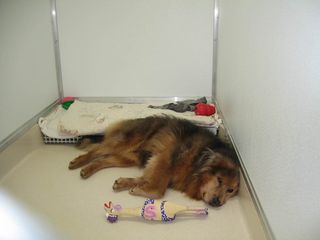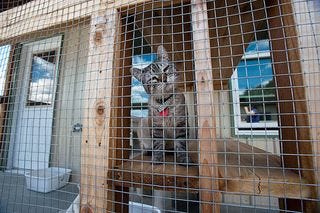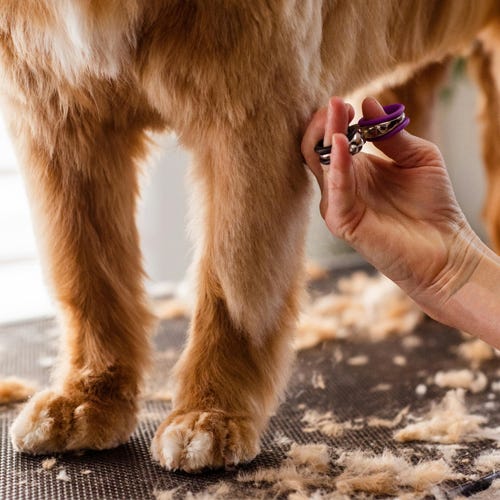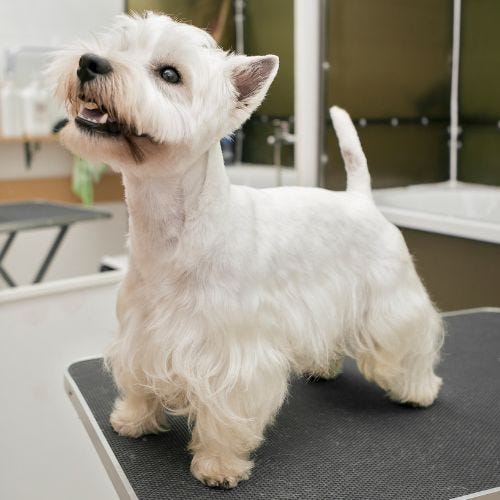The PetEdge Q & A Session: Kim Gillen of the Forget Me Not Animal Shelter
09/30/2011
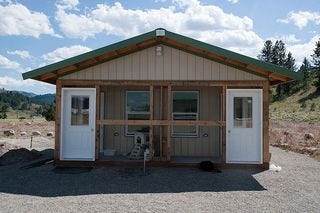
We recently spoke to Kim Gillen, a PetEdge customer and the Volunteer Executive Director of the Forget Me Not Animal Shelter in Republic, Washington.
Kim did a great job with the whole interview, which you can read here.
But her answers to these three questions were too good to miss, so we thought we'd share them again.
Q. If you could design your dream shelter, what elements would it include?
A. That's a great question, considering we just finished designing and building as close to our 'dream shelter' as we could get with the funds on hand!
A true dream shelter would have:
- Separate buildings to house dogs and cats, preferably with magically endless supply of comfortable privacy dog kennels and fun cat rooms, so whenever things started to feel crowded, another room or kennel would appear
- Quarantine rooms for dogs and cats who are just arriving, or who become ill at the shelter
- An entire building devoted to pets whose only offense is the dreaded ringworm fungal infection, so they could be treated efficiently without cross-contaminating the other pets at the shelter
- A huge laundry room with multiple washers and dryers
- A refrigerator and a dishwasher
- Bathing stations and grooming tables for both dogs and cats
- A few large, comfortable rooms for the pets to play in, and where they can interact with potential adopters
- A huge fenced yard with an agility course, a kiddy swimming pool, and shade trees, so the dogs can kick up their heels outside
- Big screened porches with climbing structures and platforms for the cats to enjoy the outdoors safely
Q. What are some of the supplies/volunteer services that shelters are always in need of?
A. It doesn't matter if it's a primarily volunteer-driven shelter, or if it's a government-funded fully-staffed municipal shelter—some things are always going to be in short supply.
There can never be too many dog toys, or treats, or paper towels.
It's impossible to overstock kitty litter, or laundry detergent, or towels and blankets for bedding.
Collars for all sizes of dogs and cat safety collars are always in short supply.
And any shelter can always use volunteers who want to come and walk a dog, or cuddle and socialize some kittens; the adult cats love to be brushed and to have a warm lap to visit, and many of the dogs come in with fur full of burrs and grass seeds, and they benefit so much from volunteers who enjoy light grooming.
If a shelter is volunteer-driven, as Forget Me Not is, then volunteers are needed for everything—scooping litter boxes and filling food bowls may not be as desirable as playing with a room full of kittens, but the pets have to have their basic needs met in addition to the 'fun' stuff.

Q. What's the best part about working with rescued animals?
A. I think every volunteer has a different "best part." For me, it's a trio comprised of:
- Feeling that gratitude and unconditional love and acceptance from the lost or abandoned pet who actually thinks living in the shelter is a big step up...
- Then getting photos and stories from adopters about their Forget Me Not family members so we can see the pets living their happy endings...
- And finally, knowing that I, and every one of the other volunteers, really make a difference to each pet that passes through the shelter, and in that way, we help to improve our community one pet at a time.
######

